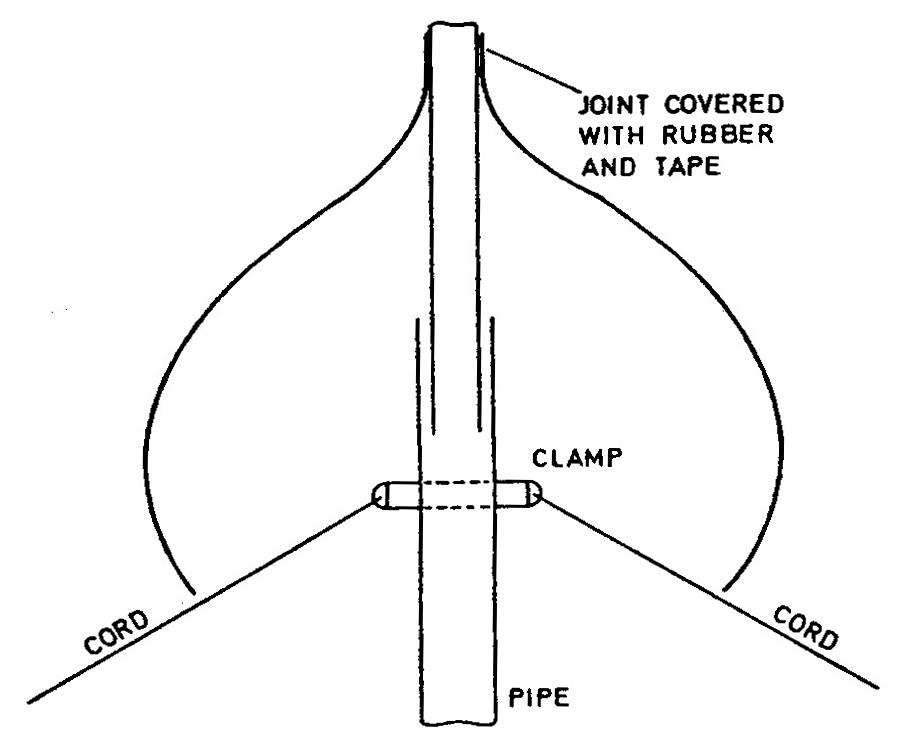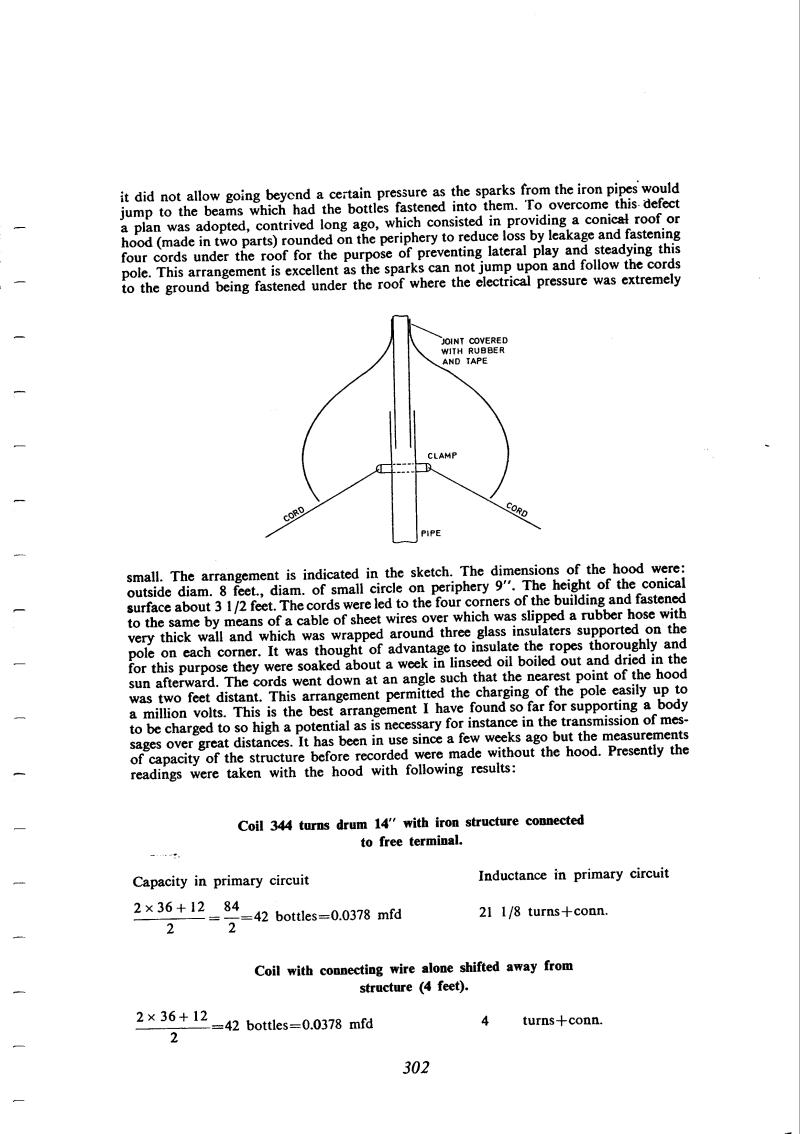
Nikola Tesla Books
it did not allow going beyond a certain pressure as the sparks from the iron pipes would jump to the beams which had the bottles fastened into them.
To overcome this defect a plan was adopted, contrived long ago, which consisted in providing a conical roof or hood (made in two parts) rounded on the periphery to reduce loss by leakage and fastening four cords under the roof for the purpose of preventing lateral play and steadying this pole. This arrangement is excellent as the sparks can not jump upon and follow the cords to the ground being fastened under the roof where the electrical pressure was extremely small.
The arrangement is indicated in the sketch. The dimensions of the hood were: outside diam. 8 feet, diam. of small circle on periphery 9". The height of the conical surface about 3 1/2 feet. The cords were led to the four corners of the building and fastened to the same by means of a cable of sheet wires over which was slipped a rubber hose with very thick wall and which was wrapped around three glass insulaters supported on the pole on each corner. It was thought of advantage to insulate the ropes thoroughly and for this purpose they were soaked about a week in linseed oil boiled out and dried in the sun afterward. The cords went down at an angle such that the nearest point of the hood was two feet distant. This arrangement permitted the charging of the pole easily up to a million volts. This is the best arrangement I have found so far for supporting a body to be charged to so high a potential as is necessary for instance in the transmission of message over great distances. It has been in use since a few weeks ago but the measurements of capacity of the structure before recorded were made without the hood. Presently the readings were taken with the hood with following results:
| Coil 344 turns drum 14" with iron structure connected to free terminal. | |
| Capacity in primary circuit | Inductance in primary circuit |
| $! {{2 \times 36 + 12} \over 2} $! = $! {84 \over 2} $! = 42 bottles = 0.0378 mfd | 21 1/8 turns + conn. |
| Coil with connecting wire alone shifted away from structure (4 feet). | |
| $! {{2 \times 36 + 12} \over 2} $! = $! {84 \over 2} $! = 42 bottles = 0.0378 mfd | 4 turns + conn. |
302
November 26
He gives the description of some details of the structure with metal sphere on top. He measures the capacitance of this system in combination with a coil with 344 turns and a new "additional coil". Earlier, on Nov. 7, he performed the capacitance measurement of the same structure, but without protective cover, and with the "additional" and experimental" coils. On Nov. 12 he performed similar measurement with coil of 1314 urns, and on Nov. 26 he recalls results of Nov. 7 with new "additional" coil. In the notes there is one more result with the "additional" coil, with the most improved method of determining resonance (please see Nov. 13). This result, which otherwise is quite different from others, is not mentioned on Nov. 26.
There is a remark at the end of the notes of Nov. 26 when he foresees the possibility of systematic errors in determining the resonant frequency and Tesla emphasized that this has to be checked.


